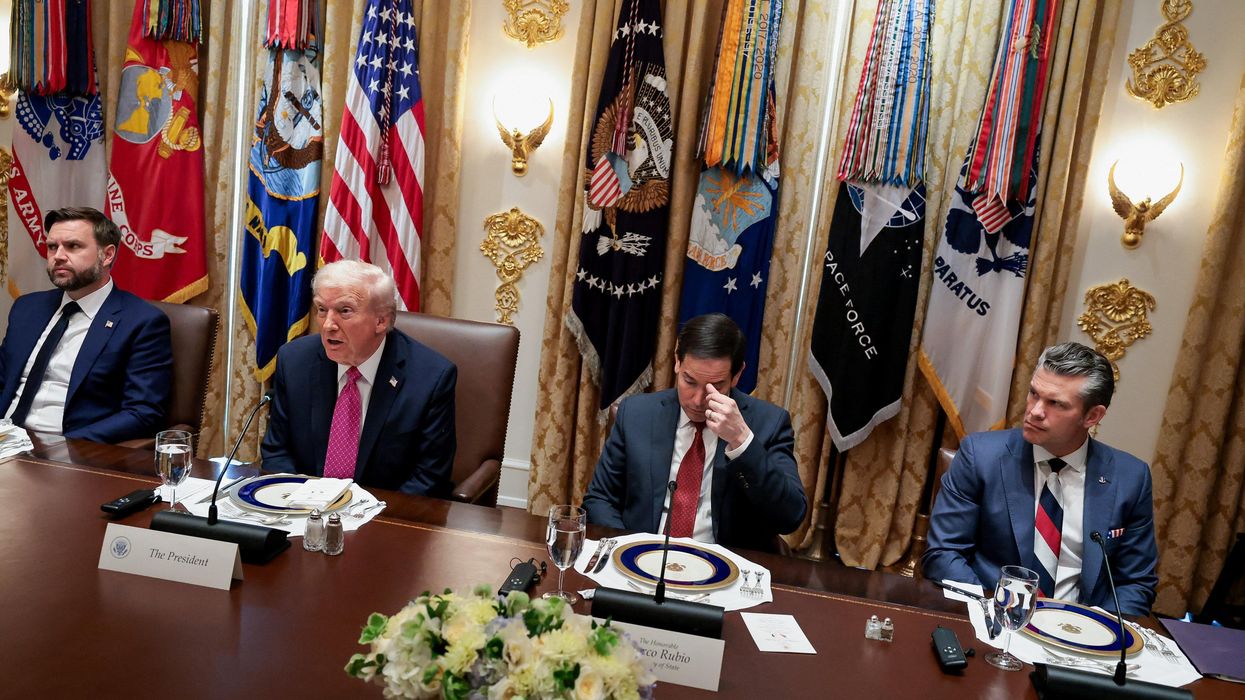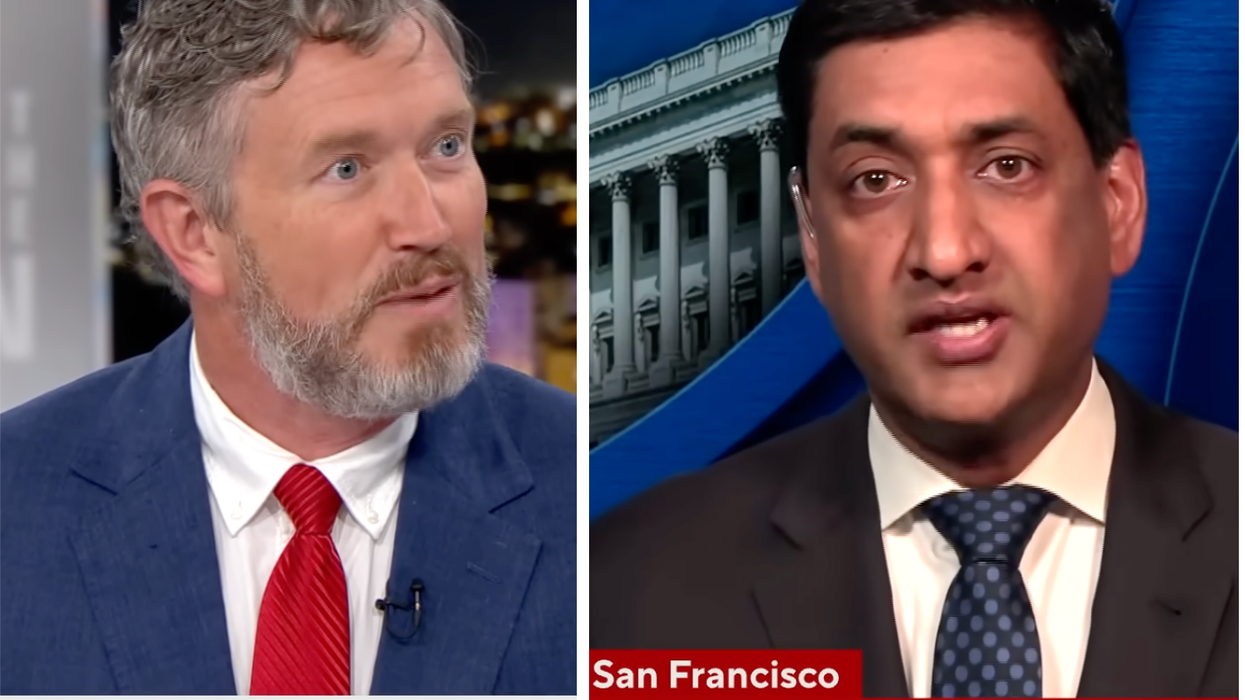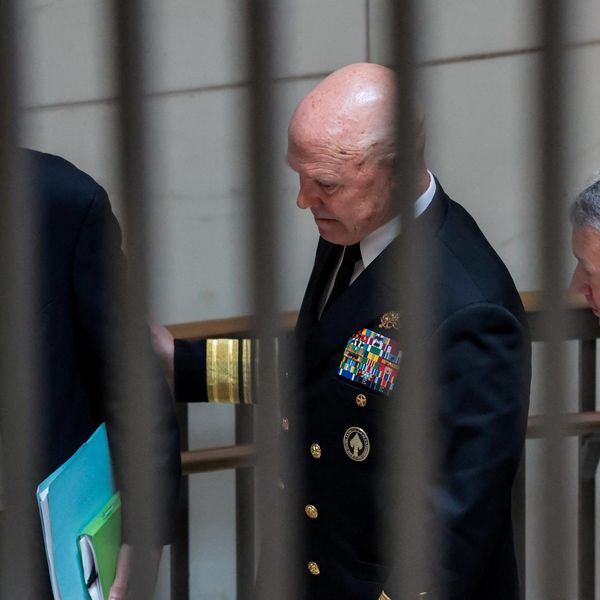Last week, the Environmental Protection Agency (EPA) released new health advisories for four different polyfluoroalkyl and perfluoroalkyl chemicals, more commonly known as PFAS, acknowledging the toxicity of the family of chemicals linked to several types of cancer, reproductive problems, and weakened immunity.
PFAS are commonly known as “forever chemicals” because once they enter the bloodstream they are virtually indestructible. PFAS are found in a range of commonplace items from nonstick pans to body lotion to pizza boxes. As one New York Times piece put it, “To say that PFAS are difficult to avoid is an understatement.” Even so, that’s more true for some than others.
Defense communities are among the hardest hit, primarily because of the Pentagon’s use of AFFF, an effective but deadly firefighting foam containing PFAS. When it rains, all of those “forever chemicals” wash away, oftentimes entering nearby drinking water sources. Even though internal Air Force reports acknowledged the toxicity of PFAS as early as 1973, the military continued to use AFFF.
Today, at least 400 military sites have confirmed PFAS contamination in their groundwater. Women exposed to PFAS reported uterine tumors, birth defects, hysterectomies, and miscarriages. “Don’t get pregnant,” one 19-year-old airman was warned.
The new interim advisories for PFOA and PFOS, the two most notorious PFAS chemicals, were set at .004 and .02 parts per trillion respectively. These new advisories reflect the potency of PFAS chemicals, which can be dangerous even in trace amounts.
These advisories are, well, advisories — meaning they aren’t legally enforceable. In a press release, the EPA explained that regulations for PFOS and PFOA are likely to come soon, and that they will unveil those plans later this year. Several advocacy groups recommend an enforceable limit of 1 part per trillion for the sum of all PFAS.
Though the Pentagon, at Congress’ direction, is finally phasing out firefighting foam containing PFAS by 2026, it has dragged its feet in cleanup. Recent testing revealed that Naval Air Station Whiting Field has PFOA levels at 51,500 times above the new interim health advisory. Naval Air Station Whidbey Island is even more stark, with PFOS levels at 236,000 times above the new advisory level.
An analysis of 50 contaminated bases by the Environmental Working Group found that it took an average of six years between the date contamination was first suspected at a base and when the Pentagon started drafting cleanup plans. None of the 50 bases in question had even begun the formal cleanup process.
Melanie Benesh, a legislative attorney at Environmental Working Group, laid out the Pentagon’s negligence during a phone call with Responsible Statecraft: “Any action by DoD is long overdue because they have known since the 1970s that the chemicals are toxic and they waited until really just a few years ago to take action and start addressing this. Community members have every right to be frustrated.”
While action on the two most well-known PFAS is much-needed, PFAS is a family of thousands of chemicals. Without regulation of the entire PFAS family, there remain loopholes that can be exploited. In the past, the Pentagon has simply replaced one toxic PFAS in its firefighting foam with another. Testing at Naval Air Station Whidbey Island showed there were six separate types of PFAS in its water, including one with an alarmingly high 1150 parts per trillion which the new advisories don’t apply to.
Mark Favors, an Army Veteran and clean water advocate characterized this approach of going after individual chemicals like PFOS and PFOA as a game of “whack-a-mole” during a call with Responsible Statecraft. In its press release, the EPA said it is “considering actions to address groups of PFAS,” but stopped short of giving further details. For now, it seems the “whack-a-mole” approach is set to continue.
In addition to the new advisories, the EPA announced it was making $1 billion in funds available for disadvantaged communities to address PFAS contamination, the first of $5 billion through the infrastructure law passed last year. Asked about PFAS contamination cleanup, Favors said that it’s impossible to know the costs ahead because the Pentagon is given impunity and allowed to investigate itself.
“We’re talking about 400 bases,” Favors noted. “The bill is going to be high, so from their perspective, it’s easier in the end to simply not deal with it.”
As he pointed out, the one bill that passes every year without fail is the defense bill. “It's hard to find people in Congress that will ask tough questions to the Pentagon,” he says. Last week’s Senate Armed Services Committee markup for the annual defense bill included $20 million for an ongoing nationwide PFAS study at military installations, a drop in the bucket for the now $847 billion defense bill.
For some, the new announcement is too little too late. Favors, who has testified that he lost several family members to PFAS-related cancer, said that “While this announcement will help protect future service members and families, it will not restore the damages to my family’s health.”
















